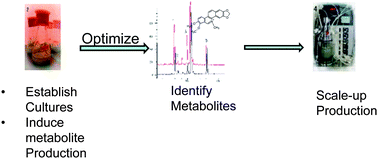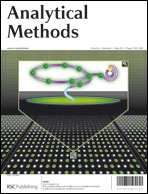Application of an integrated LC-UV-MS-NMR platform to the identification of secondary metabolites from cell cultures: benzophenanthridine alkaloids from elicited Eschscholzia californica (california poppy) cell cultures†
Abstract
Plant cell and tissue cultures are a scalable and controllable alternative to whole plants for obtaining natural products of medical relevance. Cultures can be optimized for high yields of desired


 Please wait while we load your content...
Please wait while we load your content...